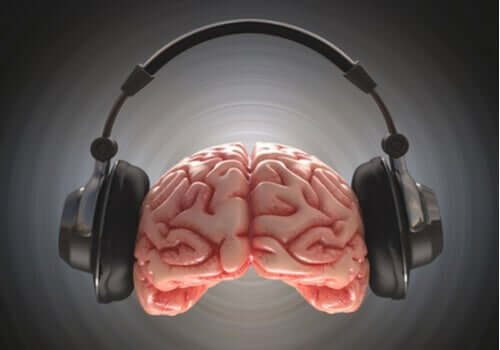Dichotic listening is one of the most widely used behavioral techniques based on perceptual lateralization in neuropsychology, this technique is used in the research of hemispheric functional specialization, i. e. the relative predominance of one hemisphere or another for certain cognitive functions.
As we already know, the left hemisphere specializes in language, in addition to speech, this hemisphere is also responsible for grammatical processing, while the right hemisphere is responsible for visuospatial treatment, perception of people’s objects and faces.
- Dicotic listening is a technique based on the simultaneous presentation of two different auditory stimuli.
- One in each ear.
- The stimuli presented can vary from words to syllables.
- Letters and even musical sounds.
- And other parameters can also vary.
- Such as inter and intra.
- Stimulus interval.
- Number of presentations or intensity.
- (1).
In this technique, projections from the ear canal to the cerebral cortex are ipsilateral and counterlateral. In this way, the information each ear receives is projected into both brain hemispheres.
During dichotic listening the ipsilateral pathways are inhibited, so the information received in one ear passes exclusively to the opposite cerebral hemisphere, then the following occurs: if there is a lesion in one of the cerebral hemispheres, a controlled hearing deficit in the wound. it will be observed under the dichotic listening condition.
A standard dicotic listening test consists of a relatively high number of dibiotic syllables, and it is common for a person to identify a greater number of syllables in the right ear (OD) than by the left ear (OE), which is called Ear Advantage. . Right (VOD). (3)
The advantage of the right ear is explained by Kimura (4. 5) from two angles. The first is that, as mentioned above, ipsilateral pathways are inhibited, which only makes the control pathways functional. On the other hand, the evidence, both clinical and neurysiological, indicates that in most people, language is represented in the left hemisphere.
Therefore, based on these findings, voD is due to the fact that the information received by the right ear travels a shorter, more direct path to the left hemisphere (control paths).
In the meantime, the information received by the left ear must pass through the control paths to the right hemisphere, and from there pass through the transcalosale path to the left hemisphere to be decoded, this affects the quality of its path and generates responses with higher latency or with more errors. (two)
Several authors have suggested that voD obtained under dicotic listening may reflect different cognitive processes than those related to language lateralization, some of the suggested processes were: arousal asymmetry or interhemispheric activation, memorizic effects and attentional effects, which are the most studied (6). )
Some cognitive functions are affected in schizophrenia, such as attention, working memory, and mainly executive functions. For example, several studies have shown that people with schizophrenia have several traits in common. First, there is a higher proportion of deaf people. In addition, there is less asymmetry of the temporal plane, lateral groove and less benefit to hearing the right ear.
Some data on the search for visual and auditory lateralization applied to major affective disorders:
Apparently, melancholy depression is associated with an exaggerated EVO, while the spectrum of anxiety disorders would be associated with insufficient EVO.
Given all this, this technique could also be applied in other pathologies, it is also used in dyslexia and multiple sclerosis, for example, its scope in neuropsychological practice is very broad, in addition, it can be used as a measure of the function of the temporal lobe and the callous body, as well as selective attention and executive functions.

